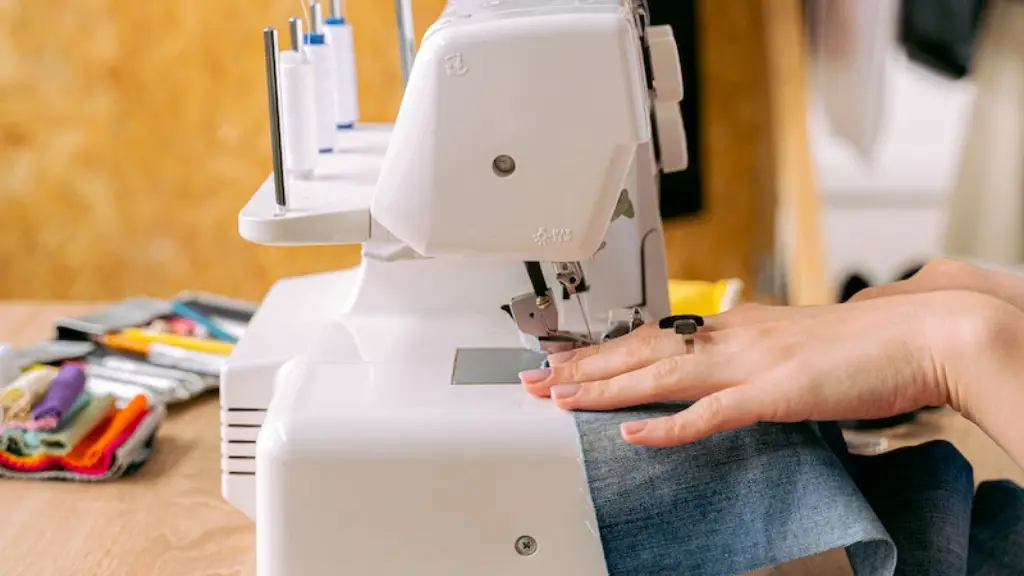Introduction:
Sewing machines are an important part of a seamstress’s toolkit. They make garments look professional, precise and tailored, and give an extra layer of sophistication to any project. Sewing machines, however, require maintenance if they are to perform to their best. Sewing machine service can be expensive, depending on the type of machine, but there are ways to minimize the cost without compromising on quality. In this article, we will explore the different elements of sewing machine service, what to expect in terms of cost and how to find a good service provider.
Maintenance Plans and How Much Do They Cost?
Most sewing machine service providers offer preventive maintenance plans for customers who want to ensure their machine stays in good shape for longer. Generally, these plans consist of regular check-ups and cleaning that can be done on a quarterly or annual basis. The cost will depend on the type of machine you have, but typically it ranges from $50 to $200. Some service providers also offer discounts for customers who opt in for a yearly plan over single-session check-ups.
Repairs and Estimates
Sometimes your sewing machine may require more in-depth work than a simple check-up. This can range from replacing faulty parts, adjusting parts or cleaning debris from the inner workings of the machine. If you are unsure of what needs to be done, most service providers will give you an estimate of the cost involved before undertaking any repairs. The cost of repairs will depend on the complexity of the damage and the parts required.
Choosing the Right Service Provider
When it comes to choosing a service provider for your sewing machine, it is important to do some research to ensure you get the best quality service for your money. Check online reviews of service providers in your area and ask your friends and family for recommendations. It’s also a good idea to contact more than one service provider for quotes and compare the prices before making a decision.
Saving Money on Sewing Machine Service
If you need sewing machine service but want to keep costs to a minimum, there are several things you can do. One option is to buy a repair manual and attempt to fix the machine yourself. Many manuals come with detailed instructions and diagrams, but they can be difficult to understand. Another option is to take a sewing machine maintenance class, which will teach you how to identify and fix basic problems with your machine.
Do-It-Yourself Repairs
If you have experience with sewing machines and feel comfortable doing some of your own repairs, you may want to consider buying a few essential tools and spare parts. Many online and offline stores sell these items at affordable prices and they can be used to fix some of the most common problems with machines. However, it is important to remember that more complex repairs are best left to a professional.
Your Sewing Machine as an Investment
Sewing machines can be expensive, but they are a worthwhile investment if you plan to use them regularly. Regular maintenance and timely repairs can help to ensure your machine is well looked after and gives you excellent stitching results for years to come. Investing in a good service provider is essential and will ultimately give you greater control over the longevity and functionality of your sewing machine.
The Benefits of Sewing Services
Regular sewing machine service can be beneficial to both novice and experienced sewers alike. Not only does it ensure your machine performs at its best, but it can also give you peace of mind that any problems you encounter will be diagnosed and fixed quickly by a professional. Additionally, many service providers offer advice and tips on how to get the most out of your machine, as well as safety information to ensure your sewing experience is enjoyable and accident-free.
In-Store vs Online Sewing Machine Services
When it comes to getting your sewing machine serviced, there are two main options – in-store or online. In-store services typically offer more comprehensive examinations and tend to be better suited to those who have more complex problems with their machines. They are also typically more costly than online services. Online services, on the other hand, tend to be cheaper but don’t offer the same level of personal attention or hands-on examination as in-store services.
Diagnostic Testing and Tune-Ups
Regardless of whether you choose an in-store or online service provider, it is important to ensure your machine is tested thoroughly. A comprehensive diagnostic test should always be performed to identify any problems before repair or maintenance is attempted. Tune-ups are also an important part of sewing machine service. These consist of regular check-ups and careful adjustments to ensure your machine runs smoothly and delivers excellent stitching results.
Keeping Track of Maintenance Records
It’s important to keep a record of all maintenance and repairs your machine has received. Not only will this ensure you know when to bring it in for servicing again, but it can also help your service provider quickly diagnose any problems with your machine if they arise. Most service providers will provide you with a maintenance logbook to record all your maintenance activities.
Conclusion
Sewing machine service can be expensive, but it’s essential to ensure your machine is properly maintained if it is to function correctly. Service providers offer preventive maintenance plans, as well as repairs, diagnostic testing, tune-ups and more. It is important to do your research and shop around to find a service provider who meets your needs and budget. By taking the time to invest in a good service provider, you can have peace of mind that your sewing machine is in safe hands and will last for many years to come.




